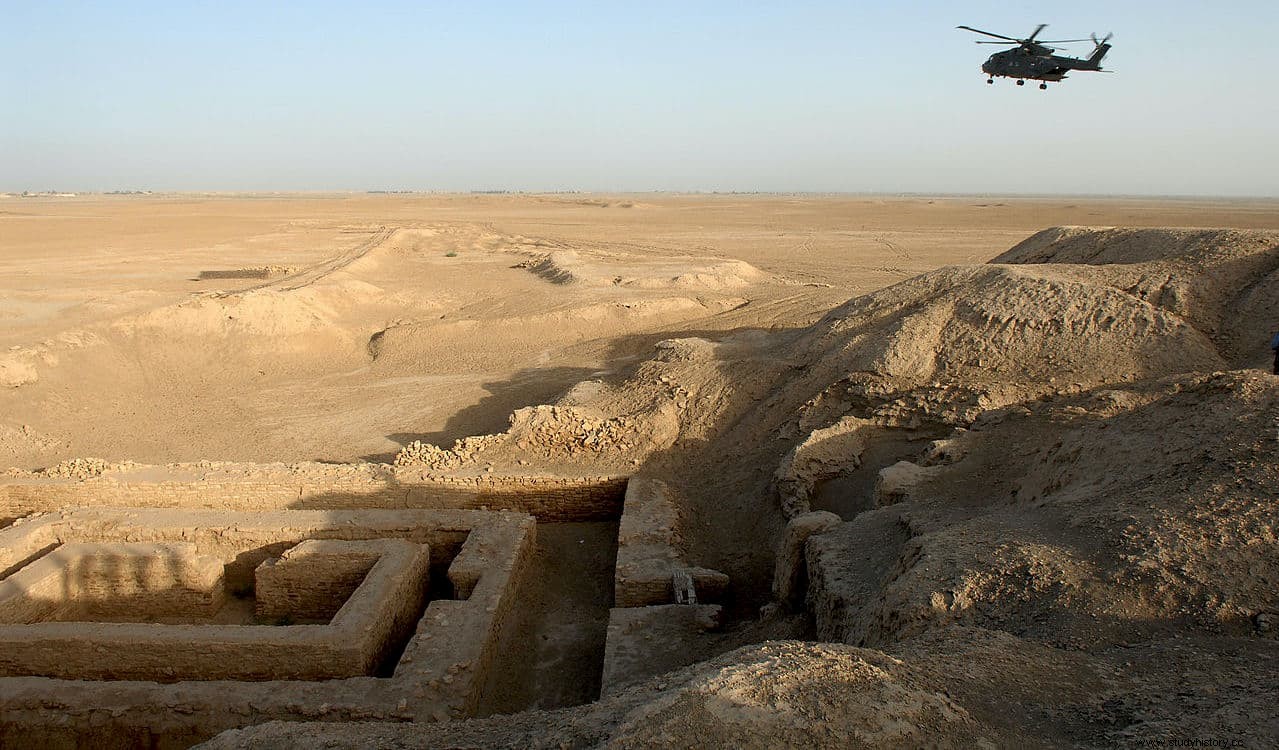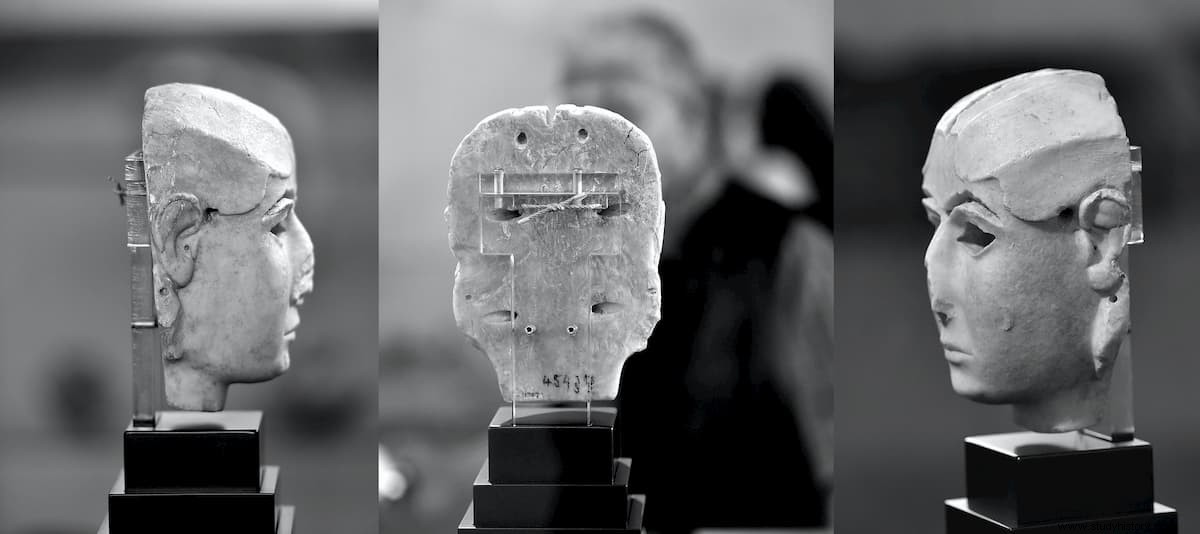On February 22, 1939, the mission of the German Archaeological Institute led by the architect Arnold Nöldeke excavating in the Sumerian city of Uruk, in the southeast of present-day Iraq, found a marble sculpture representing the face of a woman.

It was found in the area of the city where the temples dedicated to the goddess Inanna were located, the protector of the city and goddess of love (whom the Akkadians called Ishtar), of which it is considered to be a representation. The so-called Eanna district was made up of several buildings, separated from the rest of the city by a wall. The first examples of cuneiform writing were also found there.
Dating to around 3100-3300 BC, it is 20 centimeters high, and was perhaps intended to be placed on a life-size wooden body. It is smooth on the back, which had been covered with bitumen and then with colored metal, perhaps gold or copper sheets, probably so it could be affixed to a wall.
It has a channel in the upper part, where the hair would be fixed, which was probably also made of gold sheets. The eyes and eyebrows would be made of a different material, and in fact have traces of shell or lapis lazuli inlays. The piercings in the ears would indicate that he was wearing jewelry.
The importance of this piece, which was called Warka mask (Warka is the Arabic name for Uruk), also known as lady of Uruk , is that it is the first accurate representation of the human face found so far. Older finds are not anatomically exact, but rather distorted or exaggerated.

Even so, there is still a lack of stylization and a certain tendency towards the geometric representation of physical characteristics, such as almond-shaped eyes or a completely symmetrical pyramidal nose. The continuity of the eyebrows stands out, one of the typical features of Sumerian art.
Although the mask disappeared during the events of April 2003 in Iraq, it was later recovered intact, and can now be seen in the National Museum.
